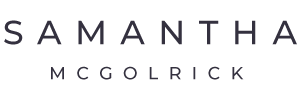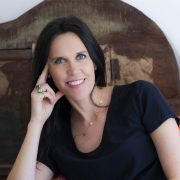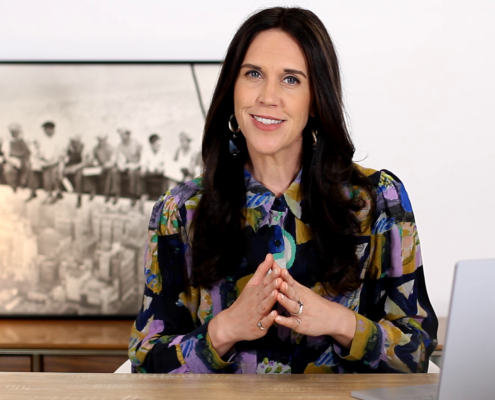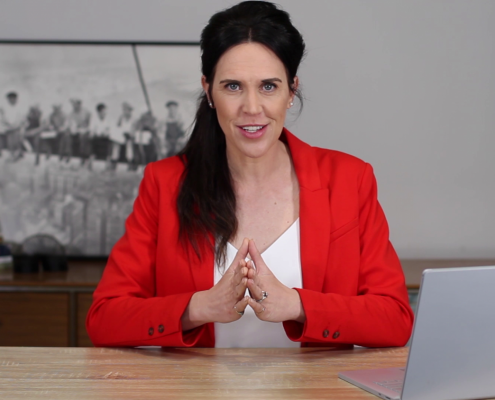As part of my research into Lead with Heart in the Boardroom, a tailored online training program for board members in safety, health and wellbeing, I formally interviewed a range of non-executive directors across various industries. Some were experienced NEDs in terms of their tenure on a board or within an industry and others were new company directors … But there was one thing they all had in common… not one had received comprehensive training in leading and governing health and safety, most had received no training at all.
This is against the backdrop of a safety profession that has changed significantly over the last decade, but has provided very little training in these developments that is tailored to a board member’s role, responsibilities and influence so that board members like yourself can use your influence to create positive safety outcomes in complex socio-technical systems.
This lack of training means that board members’ mental models of safety are primarily based on their previous experiences and are likely not up-to-date with current safety research and practices. And we can see from tragedies like that at the Dreamworld theme park or Pike River mine, or the San Bruno pipeline, or the Deepwater horizon oil rig that experience isn’t enough and it can easily become out-of-date.
In Part 1 of this 2-part series, I concluded by saying that the coroner’s report into the Dreamworld tragedy was a missed opportunity to go deeper into understanding the Board’s mental models of safety. Our mental models heavily influence how we take in information, and how we react to it. They’re the why behind our thinking and behaviours. So if we knew more about the boards’ mental models of safety, it may explain why they had a completely different perspective as to the culture and safety performance at Dreamworld to that of the coroner.
The Coroner’s use of the word ‘careless’ and negligent to depict the actions of the board might resonate with a lot of people, but if our mental models are out-of-date, then we’re really none of the wiser. Indeed, we might even think we’re doing well, when we’re doing exactly the opposite, perhaps like those on the Ardent Leisure Board.
With that said, it’s important for board members to be proactive in maintaining and updating their mental models in order to be effective in their governance and leadership role… and safety should be no exception to that.
Mental models
But I have to be honest here, it’s not that easy for board members to be aware that their mental model is out-of-date. In fact, I found a significant gap in the professional development curriculum for company directors in safety. I didn’t find one company director institute across Asia Pacific, Europe or North America that includes comprehensive training on health and safety leadership and governance in their company director professional development curriculum.
I’m sure you’ve heard of the 4 stages of competence. In the process of learning, we go from unconscious incompetence-where we don’t know what we don’t know, through to conscious incompetence-where we’ve become more aware that we don’t know enough, to conscious competence-where we have the knowledge, but it still takes a bit of brain power to implement so we don’t necessarily have the skills just yet, to the final stage, unconscious competence- where we can implement the skill without even thinking about it.
Many board members are sitting in unconscious incompetence, and that really was a lot of the drive behind why I created Lead with Heart in the Boardroom.
But if the coroner’s report had touched on the boards’ mental models of safety I think it would have highlighted what I see as a growing gap between the sophistication of the safety profession and the complexities involved in creating safety and the mental models of safety that many experienced NEDs and executive directors hold. And this gap is only going to get wider as the safety profession becomes more informed about the complexities in creating safety with no supporting comprehensive training for board members.
Many board members are going to be left behind in this movement and will have an out-of-date mental model of safety, if they don’t already. And not only does this increase the risk of serious events happening where the board is completely caught off guard like they were at Dreamworld, but it makes it even more difficult for inhouse safety professionals to educate and influence the board and other senior leaders, because quite frankly, they’re too busy fulfilling the needs and requirements of boards who have out-of-date mental models of safety. But they’re also not going to get sufficient time with senior leaders, like the board or the CEO or CFO because there’s a lack of interest and appreciation of the interconnectedness and interdependencies that exist in the system that either create or hinder safety.
Systems thinking
Recall the iceberg diagram that I referred to in Part 1; it’s a systems thinking mapping tool that we can apply to better depict the board’s potential influence on events or accidents because we can look at how the board influences the structure of the system by what board members pay attention to, comment on, measure, reward and monitor, or what the board chooses to ignore. And the structure of the system influences the climate, which influences culture and culture influences people’s decision-making and ultimately organisational outcomes or events at the top of the triangle.
Complex systems, of which we all work in, have history and this history is part of what informs the patterns of behaviour today. For example, decisions that the board made months or even years prior would have informed decisions made on the day of the tragic event because the board’s decisions would have influenced things like policies, incentives, budgets, resources and all of this informs our individual understanding of organisational priorities – this is called organisational climate – it’s people’s individual perception of how things get done and the organisation’s priorities and that will inform the priorities that people will attend to each and every day. And overtime, the climate or structure of the system will contribute to patterns of behaviour in the organisation, or the culture, and this is how the board influences culture.
For example, the coroner said: “It is unimaginable for the life of the Thunder River Rapids Ride that a failure of a pump and the consequential drop in water level created immediately a known potential risk to patrons. Why safety action was not taken earlier that day I find very difficult to understand”.
It’s not really that difficult to understand if there were patterns of behaviour that existed that were developed over time and informed by the structure of the system.
At Dreamworld, there were examples in the coroner’s report and in the media where profit and efficiency were seen as being prioritised over safety, and this of course influences the organisational climate, or what I perceive to be a priority. So if I’m working in an organisation and I believe, through my personal experiences with such things as policies, reward and recognition programs, incentive schemes, resourcing … that profit is prioritised over safety, then that is sure to influence my behaviour and decision-making when conducting my day-to-day work and dealing with conflicting priorities.
Complex systems
Because the reality is in complex systems there are multiple conflicting goals and people have to work with constraints on time and resources, or under pressures to be efficient and provide a quality product or service, but amongst all of this variability and conflicting goals they’re expected to do the job safely. So to meet these conflicting goals, people make trade-offs. A particularly common one is the efficiency-thoroughness trade-off where people will trade thoroughness for efficiency, and it’s successful most of the time, until it’s not, because unfortunately efficiency is often at the cost of safety.
The coroner also said, “It is surprising, given the state of the safety management systems in place at Dreamworld, that a tragedy of this nature had not occurred before now. It was simply a matter of time”.
But really, it’s not that surprising that a tragic incident didn’t happen before 2016 because we have to understand that people are creating safety every day in less than ideal circumstances. There’s no wonderful place where there’s no conflicting goals, no performance variability in the system … that just doesn’t happen in complex systems. And this is why people are such an important asset in any organization because they’re the only ones that can deal with all the variability. But just as our trade-offs more often than not result in success as they would have done for years at Dreamworld, sometimes our trade-offs result in failure.
So the board does play an important role here in defining the organisation’s priorities and influencing the trade-offs that people make by what board members pay attention to, comment on, measure, reward and monitor, or vice versa, what they choose to ignore.
So all of this evokes the question, how does the board know WHAT to pay attention to, monitor and comment on in order to influence a climate where safety is seen as a priority.
And that is the purpose of ensuring that our mental models are up-to-date.
The coroner’s report unfortunately does not capture the board’s mental models of safety, in particular whether they understood those interdependencies and the interconnectedness between their actions and behaviour and safety outcomes. But if we look at the coroner’s findings, the former Chair’s comment after the event, which I talked about in Part 1, and the absence of training for company directors in safety, it’s not that hard to believe, in fact it’s probably very likely that the board’s mental models of safety were out-of-date.
Key principles for board professional development in safety leadership
So if I had to put this down to key principles that boards need to understand when it comes to safety, it’s about understanding systems thinking and having the skills to apply it to your decision-making and your role in creating organisational outcomes, which includes creating positive outcomes and avoiding adverse ones.
Simply put, to create safety, we need to understand systems thinking. If we don’t understand those interdependencies and relationships that create safety, and the role that senior leaders play in outcomes, then we will simply fail to build resilient organisations and contribute to the health, happiness and resilience of those who work for us because we’ll be applying out of date logic, like linear thinking, to new complex problems that need a dynamic and systems-based approach.
Organisational resilience is about making safe-variations, knowing when and how to make trade-offs and being able to re-prioritise across multiple risks and goals whilst operating in the midst of uncertainties, changing tempos and pressures.
And this is the crux of what board training needs to encompass when it comes to safety. Your efforts are not best placed in risk assessments and monitoring controls, that gets done across many levels and different departments, and you see the results of that, and it might help with your insurance and the regulator wanting to see evidence if a serious incident occurs, but a regulator is also going to want to know that the board understands its influence on outcomes and appreciates the breadth of its impact … otherwise, you might find your board being called out in a coroners report as careless or negligent.
All my best,
Sam
Be Curious. Be Kind. Be Brave.
Welcome!
I’m Samantha
I help board members succeed in the boardroom and make a positive impact on the health, happiness and resilience of society through their effective leadership and governance of safety, health and well-being.
RESOURCES
YOU MAY ALSO LIKE…
FEATURED CONTENT
[text-blocks id=”4249″ plain=”1″]








Let us know what you have to say:
Want to join the discussion?Your email address will not be published.